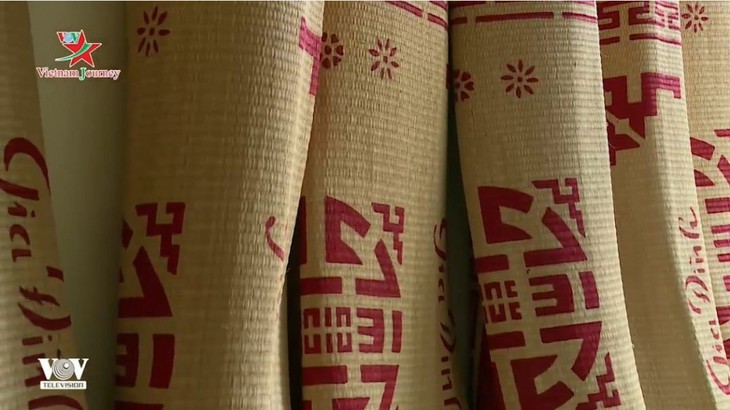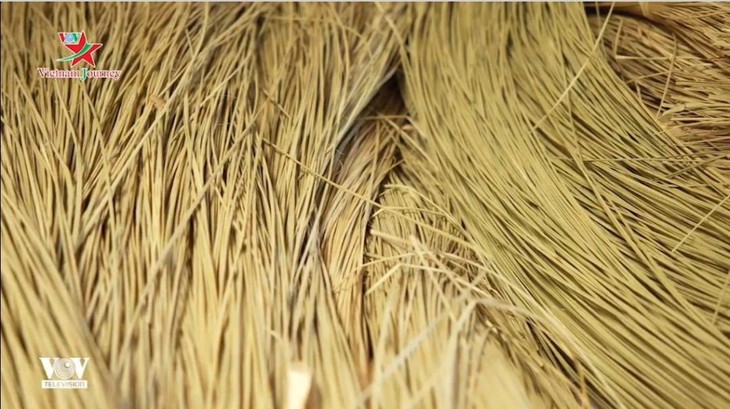(VOVWORLD) - Kim Son village in Ninh Binh province is famous for its tradition of sedge growing and weaving. The villagers grow fields of sedge on mudflats between dykes and the sea and use the sedge to craft products that are popular in Vietnam and abroad.
In 1829 a land developer named Nguyen Cong Tru led the reclamation of a deserted coastal area and named it Kim Son. He turned this vast, fertile coastal area into a cornucopia of trees, rice, and sedge. In the 1950s, local people had expanded this area to 4,000 hectares, 200 of which were dedicated to sedge cultivation.
Kim Son’s sedge weaving craft is more than a century old. Its craftsmen are famous for their skill and versatility.
 Mats are the most famous of all sedge products of Kim Son. Mats are the most famous of all sedge products of Kim Son. |
A village elder named Doan Lan said, “Over the years Kim Son’s craftsmen have maintained their creativity and enthusiasm for sedge weaving. We have new product designs to satisfy the preferences of contemporary society.”
Lan said he sticks to the craft because he wants to continue his ancestors’ legacy and can earn a living from it. "We were born in Kim Son district so love for sedge weaving is in our blood. We are working to preserve this traditional craft for our own livelihoods and for the development of our homeland,” Lan said.
Sedge has a life span similar to rice. It needs tilling, weeding, and fertilizing. The harvest falls in June and November. The quality of the sedge depends on the salinity of the water. Of all the Kim Son products sedge mats are the most popular. They require the makers to select the sedge plants carefully, then split them into threads and dry them in the sun to improve their durability and color. The most difficult part of the process is weaving floral patterns into the mats.
 The white, durable sedge threads are used to make handicraft products in Kim Son. The white, durable sedge threads are used to make handicraft products in Kim Son. |
Another Kim Son villager named Nguyen Van Chinh told VOV, “We plant, tend, and harvest the sedge plants and turn them into white, durable threads for weaving. There are many steps in preparing the sedge threads. We sometimes have to interrupt our meal to bring the sedge inside if it rains. Our predecessors had a saying: ‘Bring it out when it’s sunny and bring it in when it’s rainy’. It’s hard to be a sedge farmer.”
Every village in Kim Son district is engaged in sedge weaving. 20 craft village have been officially recognized with a total of 5,000 businesses, workshops, and households involved. Kim Son sedge mats and other craft products are sold in 20 countries and territories around the world.